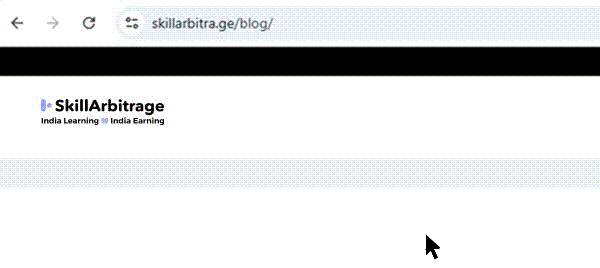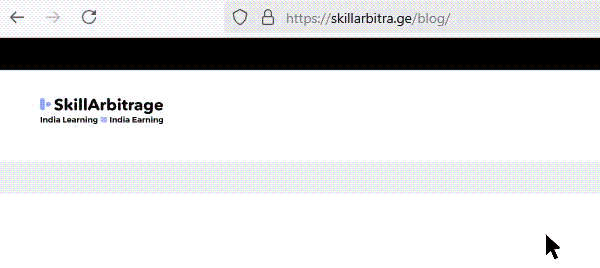This blog will show you how to keep your community active so people talk, stay, and actually buy from you.
Table of Contents
Introduction
A few weeks ago, a friend of mine who has a business where he sells online courses messaged me saying, “Bro, I made a WhatsApp group for my students so that I can upsell them, but now it’s completely dead. I tried asking questions, giving tips… but nobody replies.”
I knew this was common in most community-led businesses, so I asked him, “Did you just add people to a group or build a community?” His answer was that he didn’t know the difference and that was when I knew his mistake.
Because most people make that exact mistake too. They think just having a group means they have a community. But if nobody talks, nobody helps each other, and nobody buys, then it’s not a community but it’s just a bunch of people in one place.
On the other hand, if you build a real community where people talk, share, grow, and support each other, then that community becomes your biggest asset. Why? Because active communities build trust, and trust leads to sales.
If you’re struggling to keep your community active or wondering how to turn it into a place where people actually get interested in buying from you, then keep reading this blog because you are going to learn exactly how to do it.
But first, you need to understand the reason why most communities go dead after a few weeks.
Why do most communities go dead?
We all know how easy it is to start a community. You just need to create a group, add some people to it, and send a welcome message. Done. You also see initial excitement inside the group, and everyone being active.
But what happens 7 days later? It goes completely silent. No one replies, and no one posts. You keep sending tips or reminders, and still, all you see is just silence. It feels like you’re talking to a wall.
And then you start blaming the platform, “Maybe people don’t like WhatsApp anymore.” Or “Telegram groups are just not working now.”
But the truth is that the problem is not with the platform but with how the community was built. Look at the reasons why most communities go dead, and you will feel you also made some of these:
- The group was built without a specific purpose. People did not understand what specific purpose this group was for, which is why the group became nothing but noise for them.
- The group felt like a broadcast channel, as the only one talking was you, and others were just reading. You were not writing something exciting enough that might get people to engage.
- People didn’t feel safe to speak. The group had a “watching but not talking” vibe. Everyone was afraid of saying the wrong thing or looking dumb. Since no one broke the silence, that silence slowly became the group’s culture.
- There was no common identity in the group. People didn’t feel like they belonged or were surrounded by like-minded members. It didn’t feel like a tribe but like another random group of people sending messages.
- There was no daily rhythm in the group. People had no reason to come back regularly, as there was nothing like daily questions, polls, prompts, or discussions to look forward to. And when there’s no rhythm, people forget the group even exists.
- You stopped showing up consistently, and when that happened, the group’s energy dropped. If the person who started it isn’t active, no one else feels the need to stay active either.
- The group was filled with the wrong kind of people. Some were posting off-topic spam, some didn’t care, and others just lowered the quality of the conversation. Even if the group was active, it was active in the wrong direction, and that pushed the right people away.
And the worst part is that this can happen even if your community has hundreds of people. Even if you’re getting new members daily, because numbers don’t matter if no one’s talking.
So what’s the fix? You need a system. A daily rhythm that sparks conversation, builds connection, and keeps people coming back. Not just when you’re launching something but every single day. Let me show you how to build that.
A step-by-step method to keep your community active and make sales
Before we start, let me make it clear that this is not about throwing random ideas to see what sticks. And it’s not about being online 24/7 to keep people engaged, as it’s not sustainable.
What we are going to do is build a system that keeps your community alive every single day. It won’t just make people talk, but it’ll also make them trust you, stick around, and eventually buy from you without even needing a hard sell.
So let’s begin step by step so that you never get stuck at any part of the process. You’re going to set the vibe, build momentum, and then make sales feel like a natural part of the community. Let’s start with the foundation.
Step 1: Define the purpose & vibe of the community
Before you try to “activate” a community, pause and ask yourself, “Why does this group even exist?” That’s because if you or your members are not clear about what this community is about, they won’t know what to do inside it.
People won’t know how to behave if your community has no clear vibe or purpose. They won’t know what to post. They won’t know what kind of energy to bring. So they’ll just stay quiet. And eventually, silence will become the default.
That’s why defining the vibe and purpose, then sharing it with members inside the community, is the first step to building a community that stays alive and gives you sales. Here’s exactly how to do that:
- Decide the purpose
Start by asking yourself what the community is helping people with. And be specific with your answers. The more specific your purpose is, the more confident people will feel while having conversations about it.
For example: Suppose you created a community of freelancers. What could the purpose of that group be? It’s simple as everyone inside wants to grow, increase their fees, and build a serious business out of it. So, the purpose is the same.
- Decide the vibe
Now, think about how the group should feel. Think of the way you want the conversations to happen. Should it be casual, serious, high-energy, or supportive?
You should set the vibe you want clearly from the start because people behave based on the vibe they walk into.
For example: In a freelance community, you don’t want people to have fun conversations, as most people are there to improve themselves. So, setting a serious yet supportive tone might seem better.
- Write the welcome message
Once you’ve decided the purpose and vibe, turn it into a welcome message that you could pin inside the group or send to every new joinee. You’re simply telling them what this group is about and how they should engage. For example:
“Welcome to the group! This is for freelancers who want to grow, increase their prices, and build a serious business instead of just surviving on gigs. Feel free to ask questions, share wins or struggles, and help others when you can. The vibe here is supportive, honest, and serious. Let’s go.”
The reason why you need to do this is that people mirror what you set. If you are vague, they’ll be unsure, but if you are clear, they’ll feel confident to speak up. And once people feel confident enough to start talking, the community will start building itself.
But even if you tell them what and how to talk, they won’t do it until someone else does it first, as that is basic human psychology. How will you find the person who will start talking? You won’t try to find them because that person is you.
Step 2: Take the lead into your hands
In the beginning, your group will be quiet. Don’t worry yet, as it is normal. And it’s not because people don’t care, but because everyone is waiting for someone else to speak first. That someone is you.
If you want people to engage, you need to show them how to engage by doing it yourself. You need to set the tone through your own actions. That means you have to be the most active person in the group, especially in the first few weeks. Here are a few things you can do:
- Post something valuable
Start by posting something valuable inside the group every day, as it will make the members feel the group is at least worth checking in on for the valuable information.
Do it even if nobody is replying. Just keep showing up, and things will change slowly as the group comes alive. For example: You can post updates, tips, mistakes you made, or lessons learned.
- Ask a question
Then, consistently ask a question inside the group. If nobody replies, don’t wait; instead, answer it yourself. It will break the silence and show people it’s okay to engage even if it feels quiet in the beginning.
And once people see that kind of interaction, they’ll feel more comfortable jumping in. For example:
You can ask, “How was your day today in respect to freelancing?” If nobody responds, you can simply say, “For me – It was very hectic. I had a gig where…”
- Share your personal update
Also, start sharing things from your own journey inside the group. It could be a small win, a recent failure, a mindset shift, or anything you’re learning right now.
Doing this makes the group feel human and like a space where real people share real things instead of a content channel. For example:
You can post, “Finally hit my first ₹50k per month as a freelancer. Took me 6 months of trial and error, but it’s possible if you just stay consistent.”
- Reply to every comment
Make sure you reply to every comment inside the group, whether small or big. It shows that you’re paying attention, and every message matters. When people feel seen and acknowledged, they’re far more likely to speak up again. For example:
If someone just replies “Thanks” to your post, don’t ignore it. You can say, “Glad it helped!”.
Do this consistently, and slowly you will notice, the group starts responding back. Because communities are mirrors. If you bring energy, they reflect it. But if you stay quiet, so will everyone else.
But this alone will not turn the group around, as it could also look like you are trying too hard. So, along with this, you should add a predictable rhythm inside the group that people can expect and look forward to.
Step 3: Create simple rituals
Your group won’t stay active if every day feels random. People love predictability, and they show up more when they know what to expect. That’s why everything you see on TV is always shown at a fixed time every day.
So your job is to build a rhythm into your group using a few repeatable formats that happen daily or weekly. Nothing fancy. Just something people find easier to respond to, and they love to hear the same answer from others.
Start by choosing 2-3 simple rituals and stick to them for at least 2-3 months. Here are a few rituals that you can see, for example:
- Monday: “What’s your main goal for this week?”
- Wednesday: “What’s one win or mistake you had this week?”
- Friday: “Ask me anything.”
These questions are the type that people will find easy to respond to, and they would also like to hear what other people answered, which will boost engagement.
You can post these manually or schedule them in advance. When people see these formats happening regularly, they start participating automatically without needing reminders.
And no, you don’t need 10 different formats. Just 2-3 consistent ones are enough to keep the group alive and running on its own energy.
Step 4: Make members feel special
People won’t keep engaging if they feel ignored. If they post and get no response, they’ll stop trying. You cannot afford for this to happen, as that will dry up the sales. So, your goal is to make them feel noticed, whether with something small or big.
Because when they feel special, they will keep coming back and repeating the things they did in the group to get recognised and feel special again. Your goal is to keep the spotlight on them, and here are a few ways you can do it:
- The regular ones
Pay attention to people who ask questions, share tips, or post wins regularly. These people are the ones who are going to shape the group’s culture and keep it engaged. If they disappear, others will disappear too.
So, simply mention their name and tag them in the group every now and then with something that they feel proud of. For example: “That cold email tip Ramesh shared yesterday was lit.”
- One appreciation per week
Pick one day every week to highlight someone from the group. It could be a “Top Contributor,” “Most Helpful Member,” or just someone who showed up consistently. It doesn’t need to be fancy, as just a short appreciation post will be equally effective.
This will make people feel noticed and give others a reason to stay active, too. For example: “Member of the Week: Neha. Always helpful, always showing up. I appreciate you being here!”
- Even the small wins
If someone shares a small win with you privately, then ask them if you can post it in the group and tag them. This shows that every win matters in your community and not just the big ones.
For example: “Just heard that Raj landed his first international client yesterday. Huge win. Congrats, brother!”
- Use their name
Whenever you reply to someone in the group, use their name, as it feels more personal, and people remember it. It shows you’re not just replying but actually paying attention to them.
And that small gesture makes a big difference in how connected they feel. For example: Don’t just say, “Thanks for sharing.” Instead, say, “Thanks for sharing that, Mukesh.”
- Give them credit
If someone shares a smart tip or idea in the group, use it in a future post and give them credit. It shows that their input matters and is actually helping shape the group.
It also makes the person feel valued, and others start thinking, “Maybe my ideas are worth sharing too.” For example: “This idea came from what Priya shared yesterday. Let’s all try it this week and share how it goes.”
- Let members lead
Invite active members to lead a small discussion inside the group. It could be something as simple as asking a question or sharing a tip they recently learned.
This shows that you trust them and value their experience, not just as a member but as someone who can contribute to the group’s growth. Even if they do it once, it gives them a sense of ownership and encourages others to step up too.
The reason this works beautifully in making the group active and getting you sales is because recognition builds trust, and when members feel seen, they stick around longer and engage more often.
Also, when others see you appreciate participation, they’re more likely to jump in too. You don’t need rewards. You just need to make people feel like they matter here. That will start making your group active and ready to be pitched for making sales.
Step 5: Build trust before selling
One of the biggest mistakes people make is trying to sell too early. They build a group, barely interact, and then out of nowhere drop a message like, “Buy my product/service.” Nobody replies, and the group goes even more silent. Why? Because there’s no trust yet.
Inside a community, sales don’t come from promotions. They come from proof. People only buy when they believe you can actually help them. So you need to build that belief first before you pitch your product/service. Here’s what to do:
- Start by giving free advice in the group. If someone asks a question, help them without expecting anything back. No pitch. Just help. This will make people subconsciously feel like you are an expert in that field.
- Now, share small wins from your past students or clients. Do not post it as a brag, but as subtle proof that your stuff works or something you just want to share as an achievement for yourself.
For example: “One of my students applied this DM strategy and got 3 replies in 24 hours. Small tweak, big shift.”
- Finally, show up consistently, answering doubts, sharing lessons, and offering genuine support. Trust me, people will notice, and they will start trusting you more.
Once you do this enough, something shifts. People start trusting you. They start seeing you as someone who gets it. And now, when you pitch your offer, it won’t feel like a pitch, but it’ll feel like the next obvious step.
As you have already shown yourself as an expert by helping them, and already shared that your product actually works by sharing testimonials and reviews. Now, you need to focus on selling the right way because you need to maximise your sales.
Step 6: Sell the right way
Once your group is active and trust is built, you can finally sell something. But what most people do is they just drop a link and vanish. That kills all the trust they built. See, if you’re going to sell, do it like a human, or else you will not get good conversions.
Here’s how to do it properly:
- Start with the reason you are selling what you sell. Tell them why you are giving them the offer. For example: “I’ve seen many of you struggling with finding high-paying freelance clients, so I made a mini-course that solves it.”
- Then, make it feel personal and exclusive so that members feel they are getting something very valuable that nobody else outside the group is getting, so it’s special. For example: “Only sharing this here because you’re part of my community. This isn’t going public yet.”
- Now, don’t just say the price and give a link to buy. Give them full, detailed context on what’s inside, who it’s for, and what results they can expect. This will make it feel like a solution for their problems and not just a product.
- Lastly, make your CTA simple and clear so that members understand it at once without getting confused. It should tell them exactly what to do next. For example: “DM me if you’re interested” or “Click this link (only open for 48 hours).”
And once the pitch is done, don’t disappear. Go right back to helping, sharing, and engaging. Why? Because that will make it feel like you genuinely want to help them instead of just trying to make a quick buck.
That is the real magic. It’s not just in one sale, but it’s in building a system where the trust, value, and offers keep flowing, week after week.
Conclusion
Most people don’t lose their communities because they stopped giving value. They lose them because they never created a place where people felt like showing up. If your group is silent, don’t blame the platform. Instead, fix the experience.
Because when you build a place where people feel heard, seen, and excited to be in, everything changes. People end up talking, which makes them stay, and when they stay, they buy. You now have a system that works even when you’re not pushing every day.
Now go and use it, and soon your community won’t just be active; instead, it’ll turn into a sales machine.
FAQs
- What if I’ve already tried asking questions in my group, but no one replies?
Then don’t stop. Most people ask once or twice and give up. But what you need is consistency. Ask daily, answer yourself if needed, and slowly, the silence will break. Just like in real life, once one person starts talking, others join. You just need to be the first guy every single day for a while.
- My group has the wrong kind of people. Should I shut it down and start again?
No. Start cleaning it slowly. Quietly remove spammers or those who derail the vibe. Then, fix your group intro and welcome message to make your purpose clear. From now on, only accept people who align with that. A small active group is better than a large dead one. Quality over quantity, always.
- What if I feel awkward replying to every message in the group? Won’t it look desperate?
No. It looks like you care. And people love that. In the beginning, when things are still quiet, replying to every message is the only way to make people feel heard. Later, once others join the conversation, you won’t have to reply to everything. But early on, that’s how you build the vibe.
- How do I stop people from only asking for help and never giving back to the group?
Set the tone early. In your welcome message and rituals, encourage people to both ask and give. And every time someone helps others, highlight them. The more you reward contributors, the more others will feel like they should give too. People copy the behavior that gets attention.
- Should I move my group from WhatsApp to Telegram or Discord for better features?
Only if your current group is growing fast and needs features you don’t have now. But changing platforms won’t magically fix engagement. Most communities die because of poor experience, not poor tools. So, focus on fixing the vibe before you fix the app.







 Allow notifications
Allow notifications
